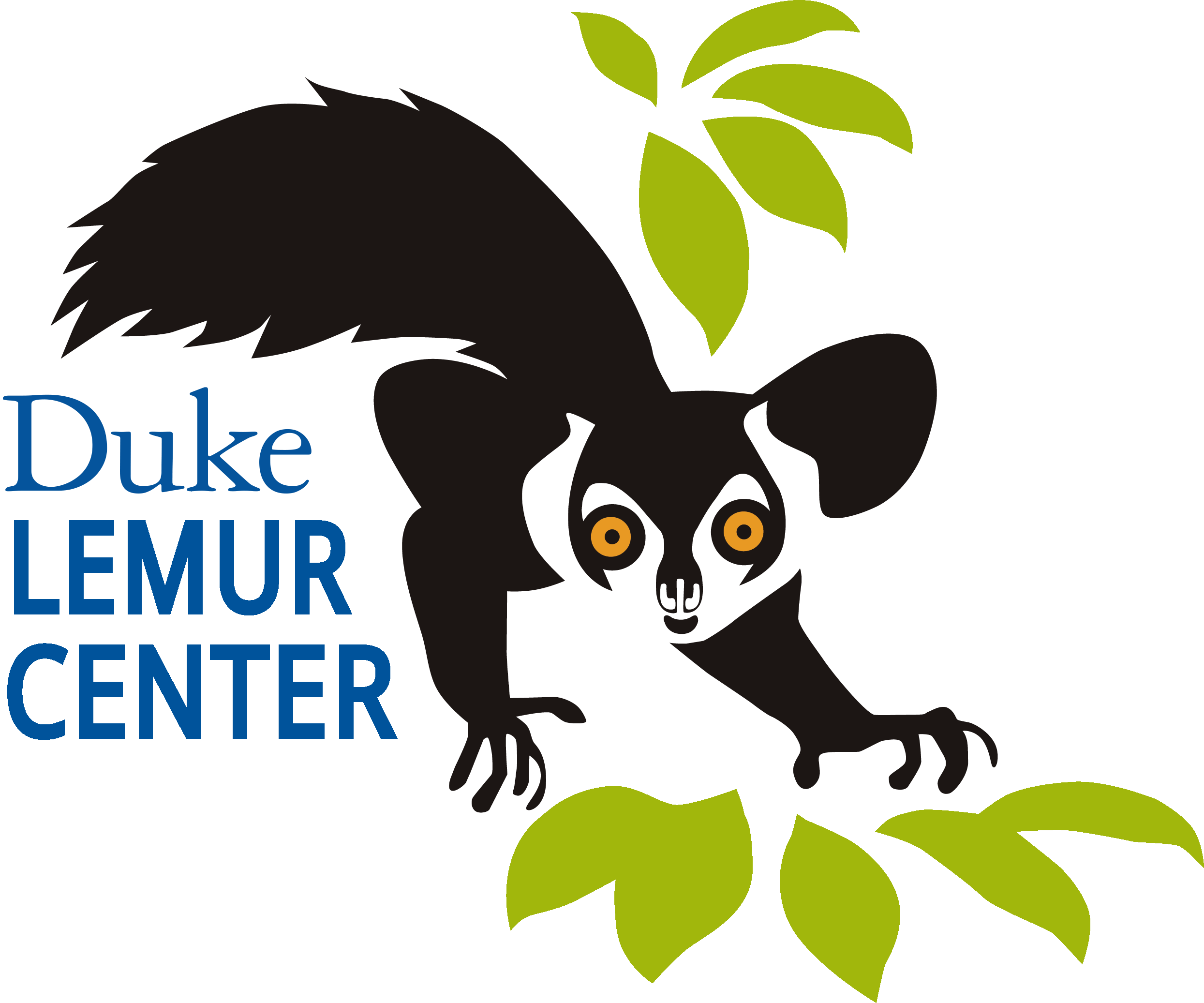By Greg Dye, M.Sc., Executive Director of the Duke Lemur Center. Originally published in LEMURS Magazine: The “Where” Issue in February 2025.
Although based at Duke University in Durham, North Carolina, the Duke Lemur Center hasn’t stayed put! With partnerships across the globe, the DLC’s reach and reputation as a world leader in lemur conservation and care has been on full display this year.
The DLC’s Colony Curator, Britt Keith, and other members of the curatorial team have been working with our zoological partners in Europe and our friends and colleagues in Madagascar’s Ministry of the Environment and support critical ex situ conservation programs* that directly impact the future of several lemur species.
*Ex situ initiatives address the conservation and care of lemurs living outside the forest in zoos, private parks, and conservation centers across the island. In-situ conservation initiatives, on the other hand, focus on lemurs still living in their natural habitat (Madagascar’s forests). Ex situ conservation measures complement in situ methods in that they provide a genetic safety net (or “insurance policy”) against a species’ total extinction. These measures also have a valuable role to play in recovery programs for endangered species.
Thanks to an on-the-ground conservation program started almost 40 years ago by the DLC’s Andrea Katz and Charlie Welch, the DLC has nurtured a strong relationship with many Malagasy communities and officials to advance the conservation of lemurs. Those relationships, built on trust and respect, are critical to the success of the DLC’s long-term conservation programs and emergency response to unforeseen events, as described below.
We are honored to play a small role in these initiatives and applaud the efforts of our European and Malagasy colleagues on the front lines of these crucial programs.
To Europe, Two by Two
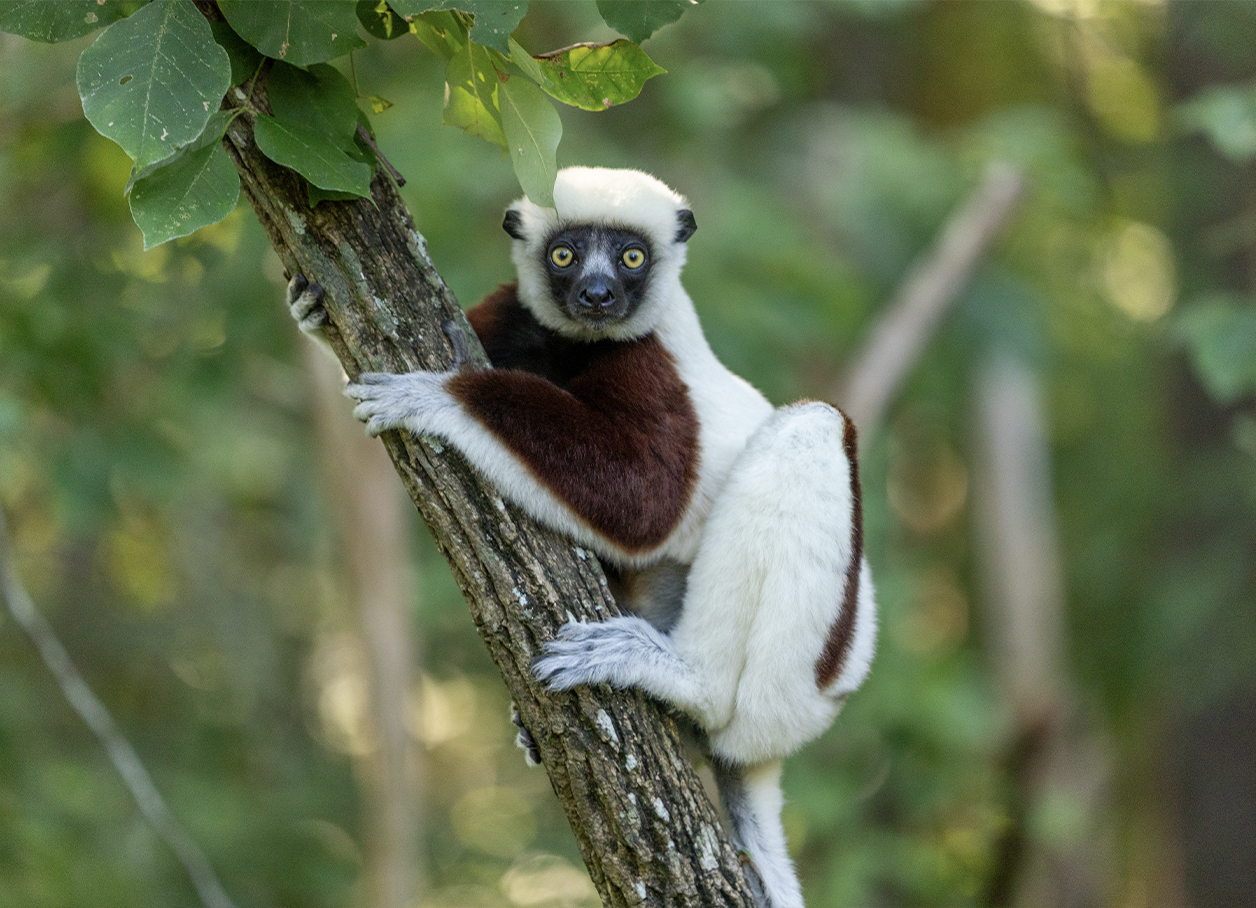
A critically endangered Coquerel’s sifaka free-ranges at the Duke Lemur Center. Photo by Sara Nicholson.
In the early 1970s, the DLC established its conservation breeding program for the critically endangered Coquerel’s sifaka (Propithecus coquereli). Over the decades, the program grew into the most successful breeding program in the world of any species of sifaka, and for years the DLC has been working with partner zoos in the U.K. and Germany to expand this breeding program to Europe.
In 2021, a half-decade of planning finally came to fruition: Four pairs of DLC sifakas were shipped to zoos in Chester, Berlin, and Cologne in an historic expansion of the Coquerel’s sifaka conservation breeding program. They became the first members of their species ever to set foot on European soil—marking the beginning of a new chapter in lemur conservation.
Two additional male Coquerel’s sifakas were shipped from the DLC to Tierpark Berlin in 2024.

A critically endangered mongoose lemur free-ranges at the Duke Lemur Center. Photo by Sara Nicholson.
This fall, two breeding pairs of mongoose lemurs (Eulemur mongoz) were sent to Tierpark Berlin to boost the European population of this critically endangered species.
“The European population of mongoose lemurs was overaged and male-biased before the shipment took place,” says Andreas Pauly, head veterinarian at Tierpark Berlin. “The Duke Lemur Center was ready to help and took over the matching of two mongoose lemur pairs.”
Two mongoose lemurs (Javier and Zoe) were sent to the DLC from the Lemur Conservation Foundation, one (Natasha) was sent to the DLC from the Philadelphia Zoo, and the fourth (Nacho) was born at the DLC. All four departed from the Lemur Center and arrived in Berlin in November 2024.
Advancing Lemur Care in Madagascar
For the past two years, a DLC Conservation Technician has traveled to Madagascar to work side-by-side with keepers at Parc Zoologique Ivoloina, a 700-acre conservation center and zoo near Toamasina on Madagascar’s eastern coast. During these months-long trips, DLC technicians lived at Parc Ivoloina and helped train zoo staff on animal husbandry, health monitoring, and breeding and birth season management techniques.
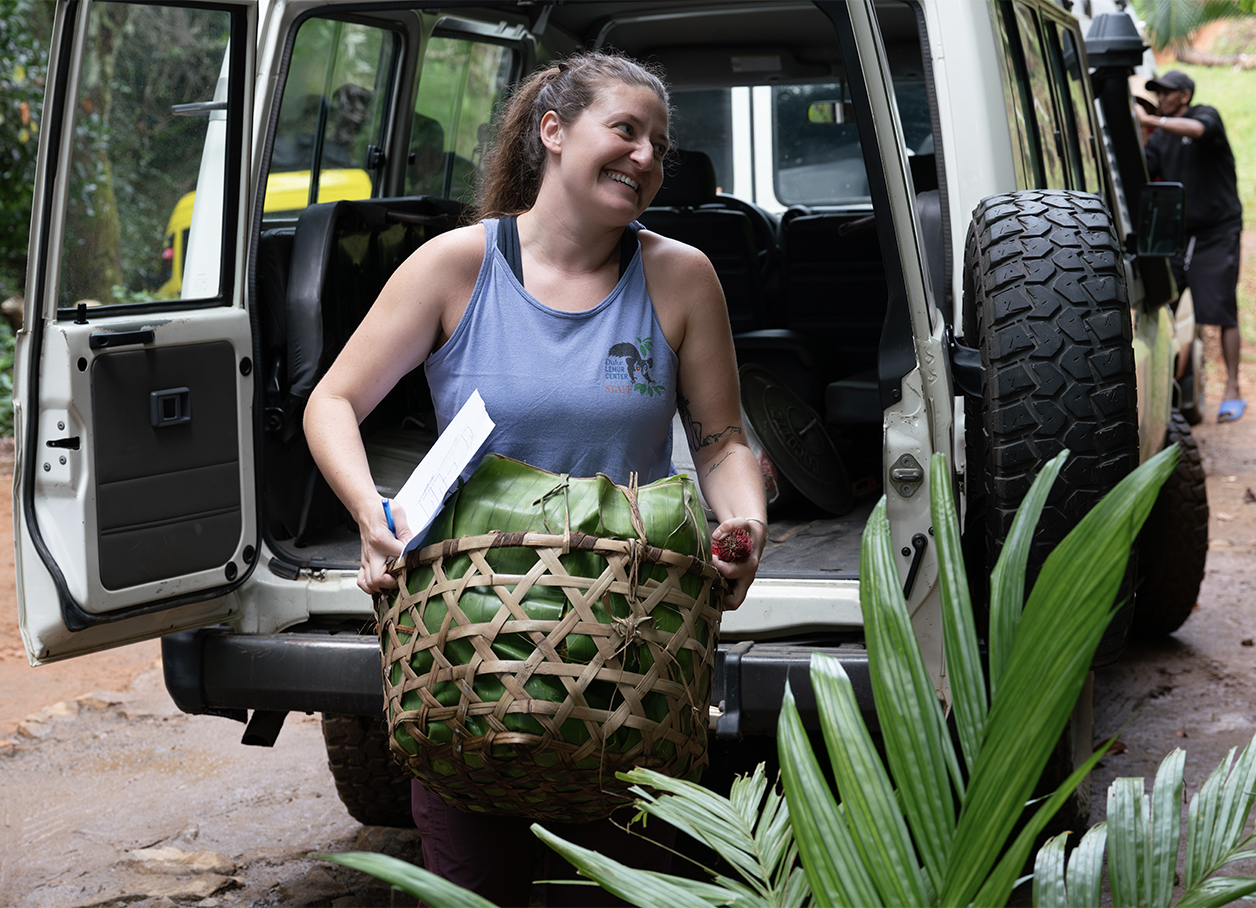
Grayson Pellerito unloads baskets of fresh fruits and vegetables for lemur diets. Photo by Sara Sorraia.
This summer, Grayson was joined by Colony Curator Britt Keith, Assistant Curator Danielle Lynch, and husbandry technician Rebecca Newton. There, they assisted Parc Ivoloina staff with body condition assessments, training demonstrations, and daily animal care.
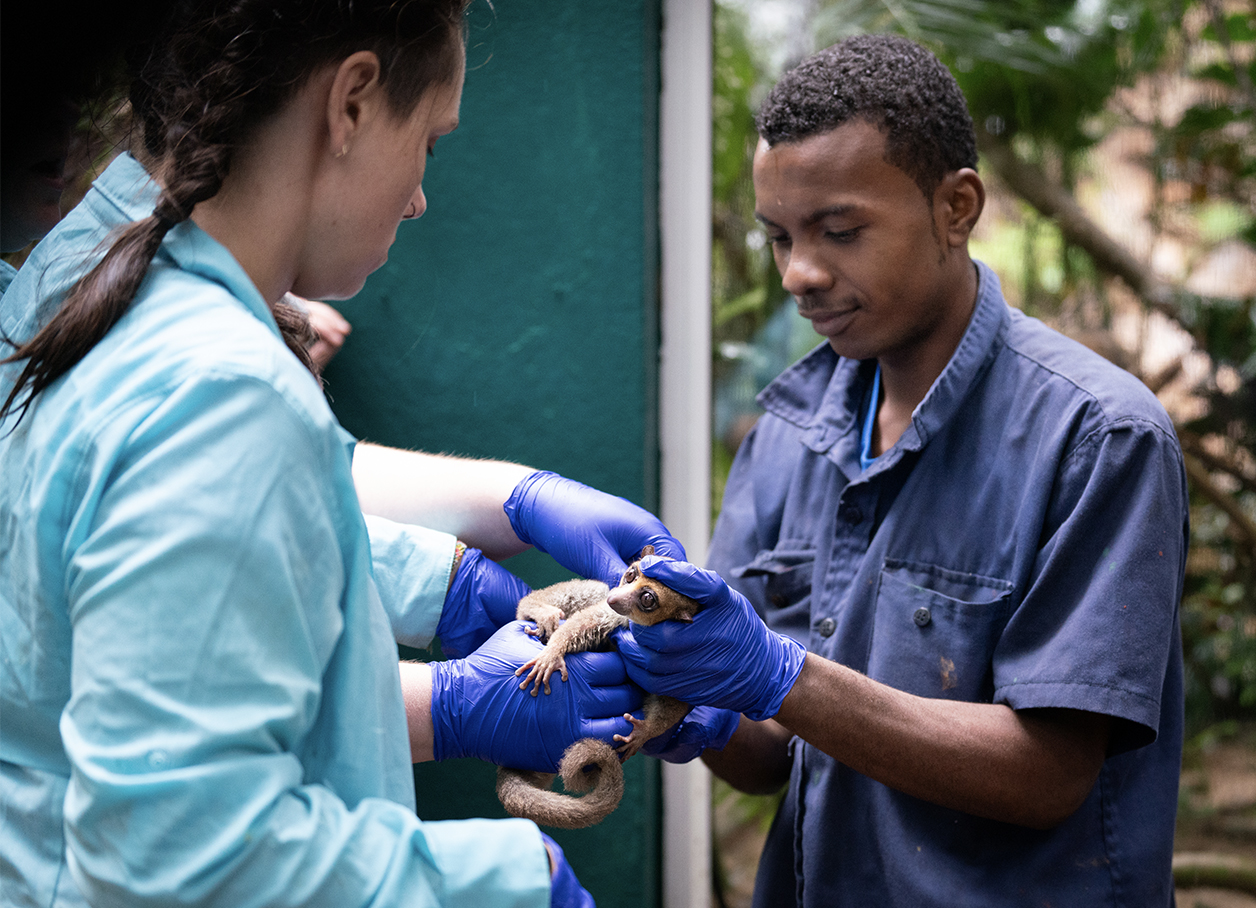
Becca and Danielle, who both specialize in Cheirogaleus health and breeding, examine a dwarf lemur with zookeeper Rodey. Photo by Sara Sorraia.
Parc Ivoloina is supported by the Madagascar Flora and Fauna Group (MFG), a consortium of zoos and other institutions committed to supporting conservation in Madagascar. The DLC has been a founding and managing member of the MFG since it was formed in 1988, and DLC conservationists Andrea Katz and Charlie Welch helped found Parc Ivoloina as it is known today.
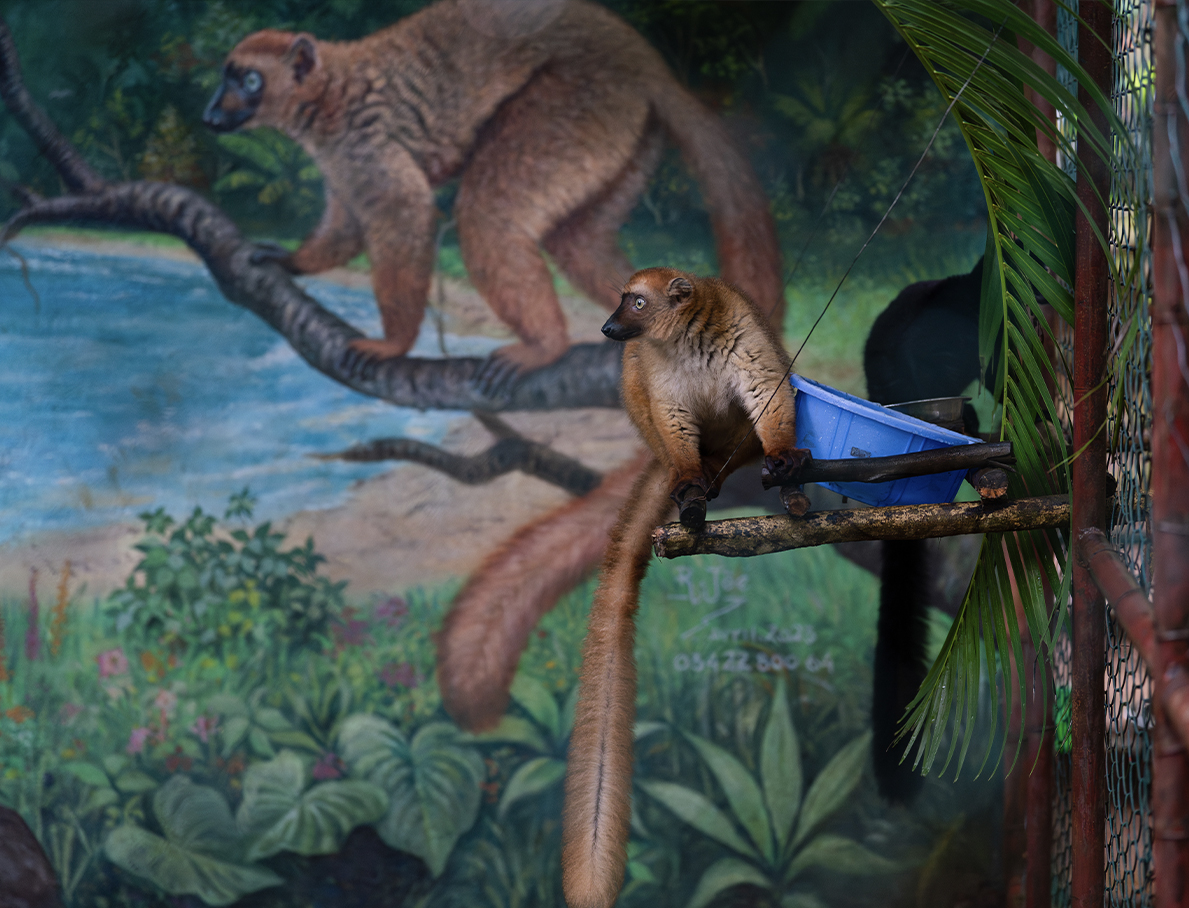
Blue-eyed black lemurs inside their richly painted enclosure. Photo by Sara Sorraia.
In 2023, the Duke Lemur Center and Madagascar’s Ministry of the Environment and Sustainable Development (MEDD) entered an Accord of Collaboration concerning the status of Propithecus coquereli (Coquerel’s sifakas) in private parks in Madagascar. For the foreseeable future, the DLC will be an active and collaborative partner with MEDD and four private parks with the development of a Coquerel’s sifaka studbook and Species Survival Plan.
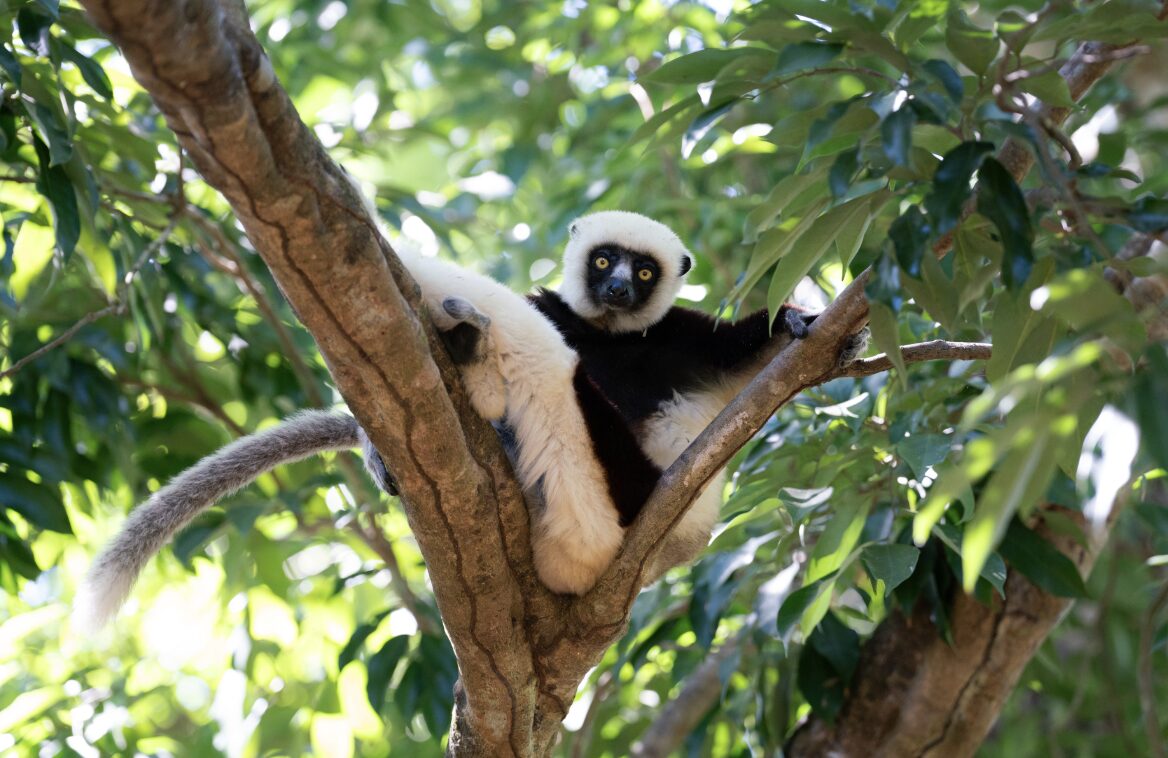
A free-ranging Coquerel’s sifaka at Lemuria Land, Nosy Be. Photo by Sara Sorraia.
In June, Colony Curator Britt Keith and Assistant Curator Danielle Lynch traveled to Madagascar to observe and verify the lemurs in each park. They also assisted in onsite data collection, delivered the microchips and scanners needed for accurate animal identification, and shared sifaka-specific information and husbandry practices with zoo managers and veterinarians.
Back in Durham, the data is being used to create a cooperatively managed Species Survival Plan, with breeding pairs chosen to maximize genetic diversity within the captive population. The goal? To protect this species from extinction by maintaining captive populations of lemurs that one day may be the best candidates for reintroduction to Madagascar’s forests, to reinforce or re-establish wild populations.
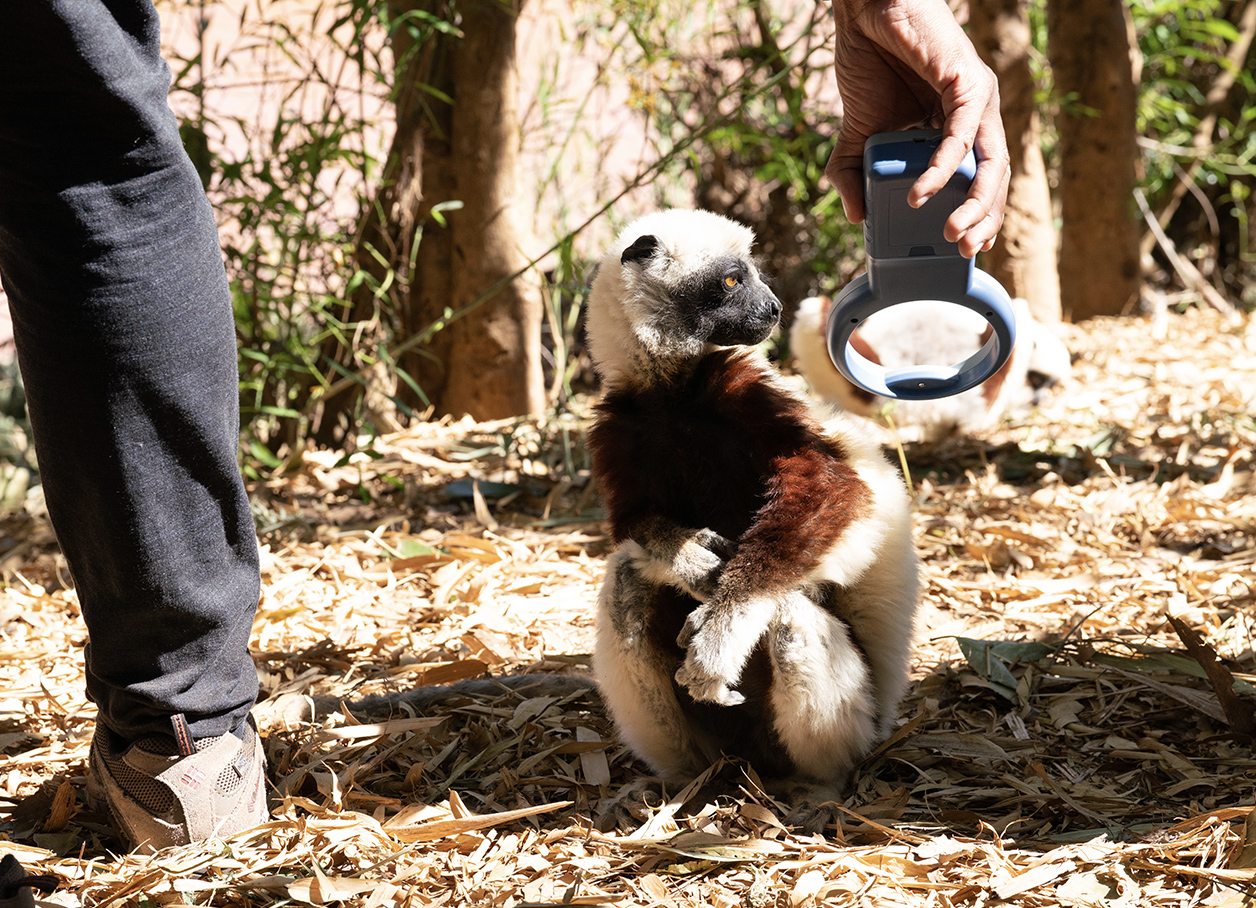
Veterinarian and Madagascar Studbook Coordinator Hoby Andriamparany scans the microchip of a male Coquerel’s sifaka at Lemurs’ Park. Microchips are used to verify the IDs of individual animals, which is critical for colony management and planned breeding. Photo by Sara Sorraia.
Lemuria Land houses four sifakas with coloring unusual for P. Coquereli. Hair samples were collected to determine whether these dark colored individuals are hybrids or a melanistic population. “There are several species of sifaka living at this park,” says Britt, “all of which can and will interbreed if given the chance. This artificially produces hybrids of two different species, which are not found in the wild populations. This threatens species’ genetic integrity and ‘muddies’ the species, among other things. Interbreeding species is actively avoided in captive breeding programs in zoos for these reasons.”

Melanistic or hybrid Coquerel’s sifakas. Photo by Sara Sorraia.
In May 2024, authorities in Thailand rescued over 1,000 endangered animals—including 47 lemurs—from animal trafficking. As various conservation groups, parks, and rescue centers worked to return these animals to Madagascar, the Malagasy Ministry of the Environment (MEDD) contacted Colony Curator Britt Keith for logistical assistance, particularly with the care and safe transportation of the rescued lemurs.
Lemurs are, unfortunately, frequent victims of the pet trade. Trafficking has a serious, negative impact on wild populations as well as on the physical and psychological health of trafficked individuals. For these reasons and many others, the Duke Lemur Center is absolutely against all trade in pet primates, and against the holding of any prosimian (lemur, loris, bush baby, potto) as a pet.
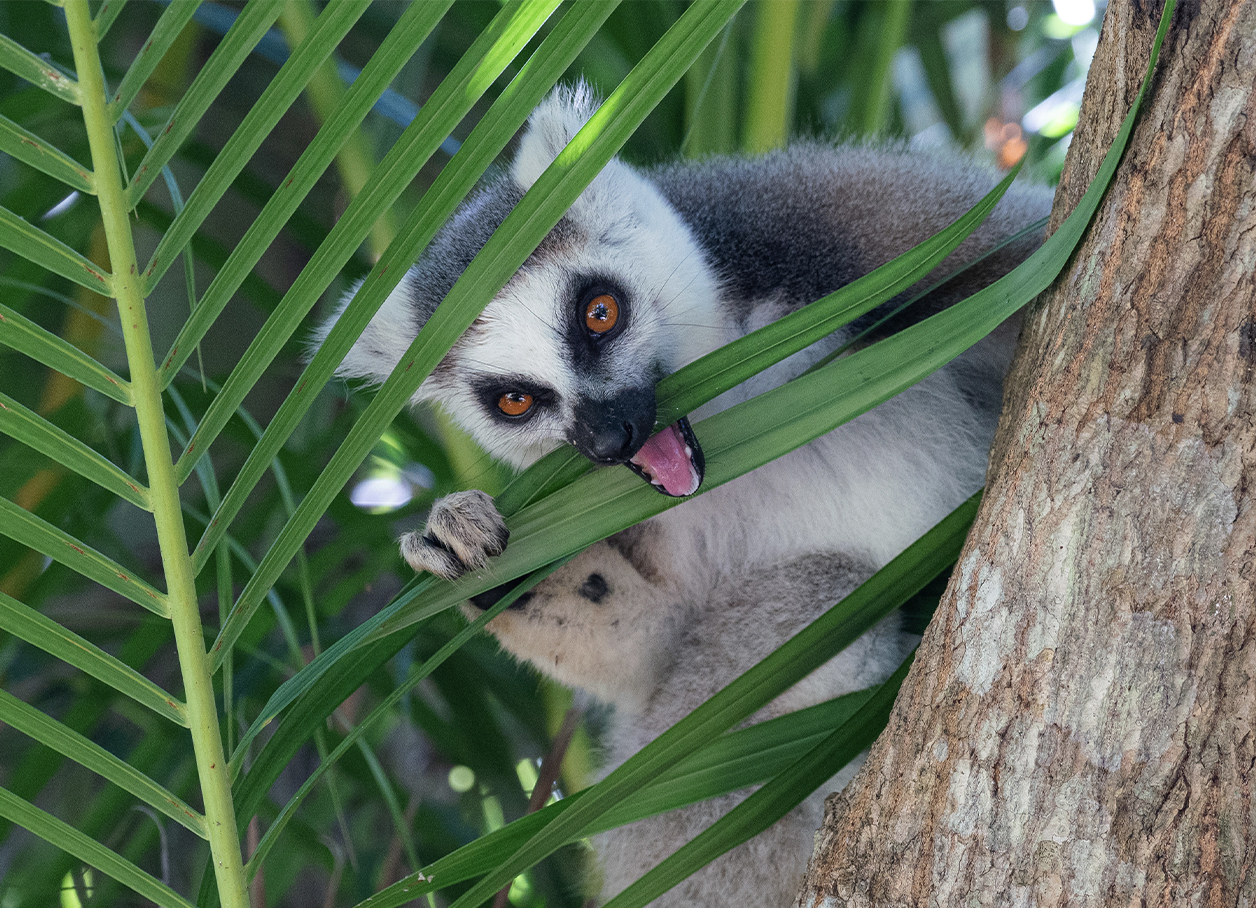
A male ring-tailed lemur in Madagascar. This individual is NOT a victim of trafficking. Photo by Sara Sorraia.
Thank You
Thank you to the Josiah Charles Trent Memorial Foundation, Margot Marsh Biodiversity Foundation, Drs. Elizabeth and Russel Cook, and all of our donors to the Madagascar Programs Fund for making these programs possible.
